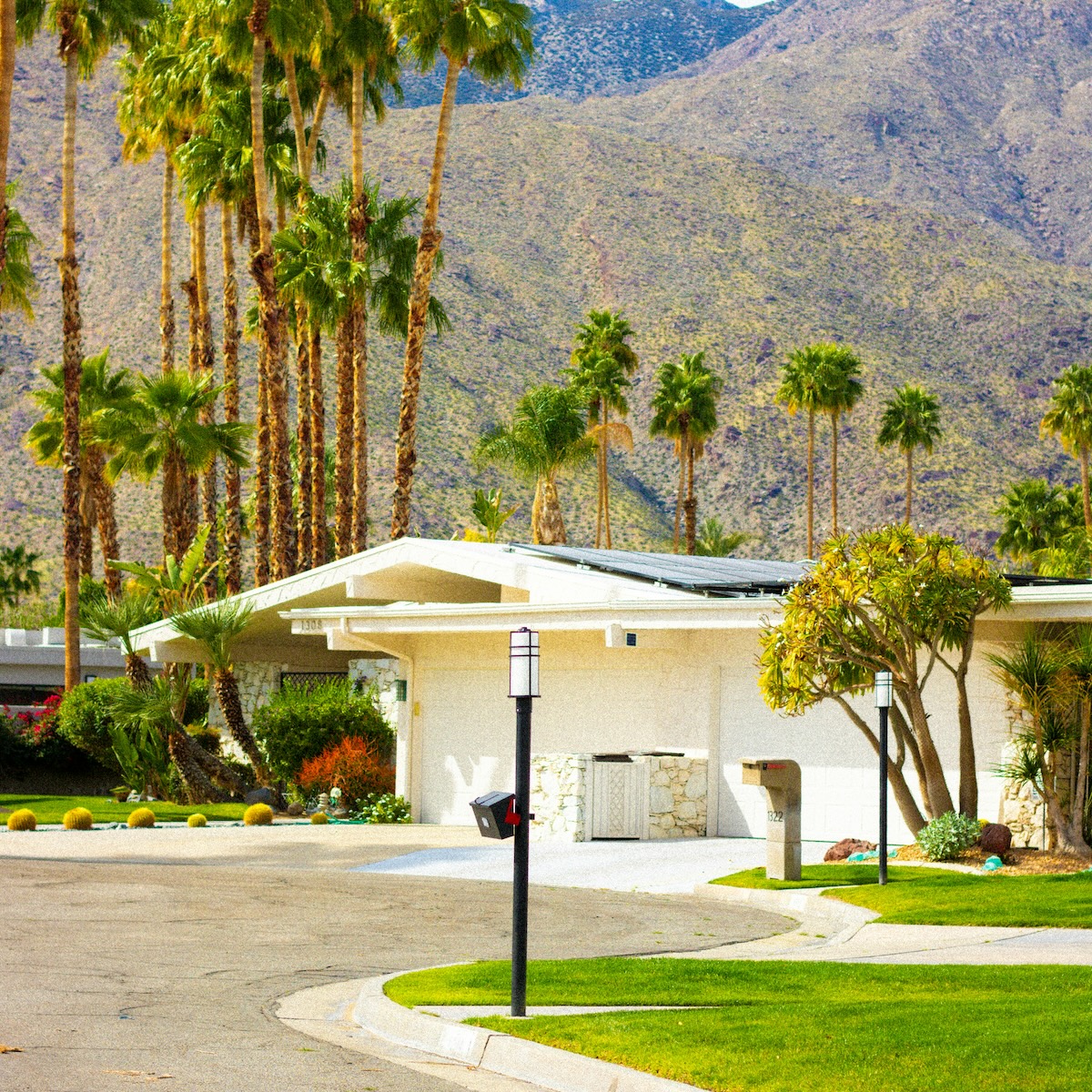Step into any contemporary home decor store or scroll through popular interior design accounts on social media, and you’ll quickly notice a familiar aesthetic that seems both nostalgic and refreshingly current. Clean lines, organic shapes, and a perfect balance of form and function characterise this style that has captivated design enthusiasts for decades. Welcome to the world of Mid-Century Modern design.
Mid-Century Modern, a term that encapsulates the design movement spanning roughly from 1945 to 1969, has experienced a remarkable resurgence in recent years. But what exactly is it about this particular era of design that continues to charm and inspire us well into the 21st century?
Below, we’ll explore the enduring appeal of Mid-Century Modern design, tracing its origins, examining its key features, and uncovering the reasons behind its current popularity. Whether you’re a longtime fan or a curious newcomer, join us on this journey through time to understand why the aesthetics of the 1950s still feel so relevant today.
Historical Context
To truly appreciate the significance of Mid-Century Modern design, we must first understand the unique historical context from which it emerged.
In the wake of World War II, the United States experienced an unprecedented period of economic prosperity and optimism. The war’s end brought about a sense of relief and hope for the future, coupled with rapid technological advancements and a baby boom that reshaped society.
This post-war optimism manifested itself in various ways, including architecture and design. The American dream of homeownership became more attainable, leading to a surge in suburban development. New homes needed new furnishings, and designers were eager to break away from the heavy, ornate styles of the past.
Simultaneously, the war had spurred incredible technological progress. New materials like molded plywood, fiberglass, and plastics became available to designers, opening up a world of possibilities for creating furniture and objects in innovative shapes and at more affordable prices.
Another crucial factor in the development of Mid-Century Modern design was the influx of European talent to the United States. Many renowned European designers and architects, including Walter Gropius, Ludwig Mies van der Rohe, and Marcel Breuer, fled to America during and after the war. These designers brought with them the principles of the Bauhaus school and other modernist movements, significantly influencing American design.
This unique combination of post-war optimism, technological innovation, and European influence set the stage for a design revolution. Mid-Century Modern emerged as a reflection of this new era – a style that embraced the future while remaining grounded in functionality and simplicity.
The period from 1945 to 1969 saw an explosion of creativity in design, architecture, and popular culture. It was during this time that iconic pieces like the Eames Lounge Chair, the Saarinen Tulip Table, and the Noguchi Coffee Table were created – pieces that would go on to define the Mid-Century Modern aesthetic and continue to be coveted by design enthusiasts today.
As we look deeper into the characteristics and enduring appeal of Mid-Century Modern design, keep in mind this rich historical backdrop. It’s against this canvas of post-war progress and cultural shift that the timeless allure of Mid-Century Modern began to take shape.
Key Characteristics of Mid-Century Modern Design
Mid-Century Modern design is instantly recognizable for its distinctive features. Let’s explore the key elements that define this iconic style:
A. Clean lines and organic forms: Mid-Century Modern eschews ornate decoration in favor of sleek, simple lines. Furniture and architecture often feature gentle organic curves alongside geometric shapes, creating a harmonious balance between man-made and natural forms.
B. Functionality and minimalism: The ethos “form follows function” is central to Mid-Century Modern design. Each piece serves a purpose, with unnecessary embellishments stripped away. This focus on functionality results in uncluttered, practical spaces.
C. Integration with nature: Large windows, open floor plans, and the use of natural materials like wood reflect a desire to blur the lines between indoor and outdoor spaces. This connection with nature was a refreshing change from earlier, more closed-off architectural styles.
D. Use of new materials: Designers embraced innovative materials like molded plywood, fiberglass, and plastics. These allowed for the creation of novel shapes and more affordable production methods.
E. Bold colors and graphic patterns: While neutral tones were common, Mid-Century Modern wasn’t afraid of color. Bold hues and striking patterns, often inspired by abstract art, were used as accents to enliven spaces.
Iconic Mid-Century Modern Designers
The Mid-Century Modern movement was shaped by numerous talented designers. Here are a few key figures whose work continues to influence design today:
A. Charles and Ray Eames: This husband-wife duo is perhaps the most famous of all Mid-Century Modern designers. Their Eames Lounge Chair is an enduring icon of the era.
B. Eero Saarinen: Known for his Tulip Chair and table series, Saarinen’s work exemplifies the organic, flowing forms of Mid-Century Modern design.
C. Arne Jacobsen: This Danish architect and designer created classics like the Egg Chair and the Swan Chair, showcasing Scandinavian influence on the movement.
D. Florence Knoll: As both a designer and a businesswoman, Knoll was instrumental in bringing Modern design to office spaces.
E. George Nelson: His Marshmallow Sofa and Bubble Lamps pushed the boundaries of form and materials in furniture design.
Why Mid-Century Modern Design Remains Popular
The enduring appeal of Mid-Century Modern design can be attributed to several factors:
A. Timeless aesthetic: The clean lines and simple forms of Mid-Century Modern pieces have a timeless quality that transcends fleeting trends.
B. Functionality and simplicity in a complex world: In our increasingly cluttered and complex lives, the simplicity and functionality of Mid-Century Modern design offer a refreshing counterpoint.
C. Nostalgia factor: For many, Mid-Century Modern evokes a sense of nostalgia for a perceived simpler time, tapping into our collective cultural memory.
D. Sustainability and quality of vintage pieces: Many original Mid-Century pieces were built to last, appealing to modern consumers interested in sustainability and quality craftsmanship.
E. Adaptability to modern interiors: Mid-Century Modern pieces can easily blend with other styles, making them versatile additions to contemporary interiors.
Mid-Century Modern in Contemporary Design
The influence of Mid-Century Modern extends well beyond vintage furniture stores:
A. Influence on current designers and brands: Many contemporary designers draw inspiration from Mid-Century Modern principles, creating pieces that honor the past while looking to the future.
B. Modern reproductions and adaptations: Numerous companies now offer reproductions or updated versions of classic Mid-Century designs, making the style accessible to a wider audience.
C. Mix-and-match approach in interior design: Today’s eclectic interiors often incorporate Mid-Century Modern pieces alongside items from other eras, creating unique, personalized spaces.
How to Incorporate Mid-Century Modern into Your Home
Interested in bringing some Mid-Century Modern flair into your space? Here are some tips:
A. Starting with statement pieces: Begin with one or two iconic pieces, such as an Eames chair or a Noguchi coffee table, as focal points in your room.
B. Color palettes and patterns: Experiment with a mix of neutrals and bold colors. Don’t be afraid to incorporate graphic patterns in textiles or wallpaper.
C. Blending with other styles: Mid-Century Modern can complement many other design styles. Try pairing it with contemporary pieces for a fresh, eclectic look.
Conclusion
The revival of Mid-Century Modern design is more than just a passing trend. Its enduring popularity stems from its timeless aesthetic, functionality, and ability to adapt to changing tastes and needs.
As we’ve explored, the principles of Mid-Century Modern design – clean lines, organic forms, and a focus on functionality – continue to resonate with contemporary audiences. Whether through original vintage pieces, modern reproductions, or new designs inspired by the movement, Mid-Century Modern continues to shape our living spaces and our understanding of good design.
The cyclical nature of design trends reminds us that good design is truly timeless. By understanding and appreciating the principles behind Mid-Century Modern, we can create spaces that are both of-the-moment and enduringly stylish.
We’d love to hear about your experiences with Mid-Century Modern design. Do you have a favorite piece in your home? Perhaps you’ve been inspired to incorporate some Mid-Century elements after reading this article?
Share your thoughts and photos in the comments below, or tag us on social media with your Mid-Century Modern inspirations.
And don’t forget to explore your local vintage shops or design museums. You never know what Mid-Century treasures you might discover!

